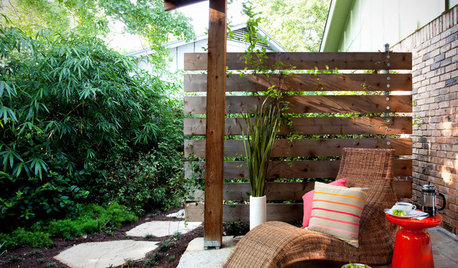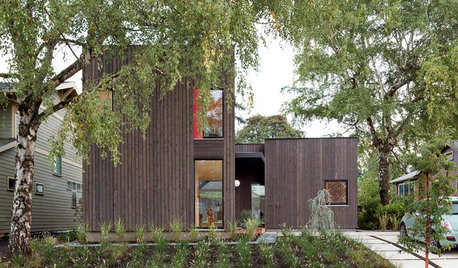Apologies for the long post, I will try and keep it concise.
Pics in comments.
Location - Maitland, NSW, Australia.
Background - We built our new house and it was turfed with Shademaster buffalo. 12 weeks ago, after a severe grub infestation, learning this turf type wasn't appropriate for our conditions and wanting a level yard, we removed the buffalo and chose to sow our own lawn from seed.
We roughly levelled the clay base of our whole block, scattered gypsum and levelled with between 4 and 10 inches of a sandy loam soil.
We used Munn's Arid Grass seed (100% tall fescue) as this was advised (admittedly by the local hardware stores nursery guy) to be the best for our sun/shade and soil conditions. When sowing the seed we allowed the soil first to settle, then laid the seed with starter fertiliser, wetting agent and a scattering of Dynamic Lifter.
It was watered 4 hourly (or as required) to keep the top 2cm of soil moist for germination.
After 2 weeks we had great germination in most areas and the watering was tapered back to once a day over the next 8 weeks to try and foster deeper root growth (now currently watering once every 3 days as it is the height of summer here and regularly around 40 degrees C but working towards once a week)
4 weeks after seeding the lawn was mown (on mowers highest setting, all clippings bagged), and two weeks later given another dose of starter fertiliser (as recommended on the seed bag). Mowing has since been done roughly once a week at 5cm cutting height (also recommended on seed bag).
Now, 12 weeks on from sowing I have a number of issues that have arisen that I am at a loss as to how to fix.
Issue 1 - Fungus? We had a 2 week period recently of summer storms every afternoon leaving the lawn wet/damp overnight in warm temperatures which I believe has allowed brown patch (?) to get a foot in. I did no additional watering to the rain, but the rain was heavy and poorly timed for new grass! These patches are relatively circular, appear in the wettest areas of the yard, and have resulted in large patches of thatch.
My question here is, do I use a fungicide and risk altering the soil microbes, or just let better lawn practice do its job and overseed the patches come autumn, after the heat of summer? Now that the grass needs less water and everything has dried out after the rain will the fungus eventually die off as the weather cools in a few months or am I off track with that? Obviously I will remove the dead thatch before oversowing but do I do that now and risk spreading the fungus or leave it?
Issue 2 - There is a large corner of the yard that had a significantly lower rate of germination than the rest, and what did germinate has now died.
My theory here is that this area has a deeper layer of sandy loam (maybe 10 inches) and the faster drainage in this area has meant that the newly germinated seeds didn't have the same water retention around them as the seed in the shallower sandy loam with the clay base. Is this logical or is there something else I could be missing? There is no other obvious discrepancy between this patch of yard and that 5 metres away that has lovely grass other than the depth of the soil used for levelling.
So, can I add organic material here to help drainage? Or do I just oversow and water more and deeper than I did for the germination of the rest of the yard?
With oversowing, am I wasting my time doing it now (Summer)? Should I wait until Autumn/Fall and do it then?
Issue 3 - Weeds
Our block backs on to a farm, and the farmer nicely decided to slash his paddock on a very windy day just a week after we sowed our grass. Needless to say, our yard copped a battering with his airborne seeds and I now have all sorts of weeds popping up. I am currently managing them by hand weeding as I assume adding a herbicide to such a young grass would likely do more harm than good. Is this right? or is there something I could use to kill off some if not all of the weeds beginning to appear? Am I better off just going on by hand and waiting until next year for the lawn to be thicker/stronger before spraying?
Overall there are patches of amazing lush lawn, patches of fungus affected areas and patches of just down right dead grass with no apparent reason for where/why such as shade/sun, more or less water, more or less fertiliser etc. The whole lawn has had the same treatment but has such varied results.
Is it worth trying the rabbit pellet idea as an organic fertiliser, or should I just wait until next spring and topdress with a good compost? Given the soil has settled a fair bit I can probably afford to add an inch or so of good soil without raising the lawn height above pathways if that would work better.
I just have no idea where to start!! Any help would be greatly appreciated :(
This post was edited by grassy_smurf on Thu, Jan 15, 15 at 0:45















User
grassy_smurfOriginal Author
Related Discussions
Newly planted Bahia lawn. Help!
Q
Newly seeded lawn, HELP!!!
Q
Insect control on newly-planted lawn - how bad?
Q
Newly seeded lawn coming in thin & weak ...
Q
grassy_smurfOriginal Author
grassy_smurfOriginal Author
grassy_smurfOriginal Author
elleau
elleau
grassy_smurfOriginal Author
User
grassy_smurfOriginal Author
mightyquinnaty
User
SimonR
mightyquinnaty
grassy_smurfOriginal Author